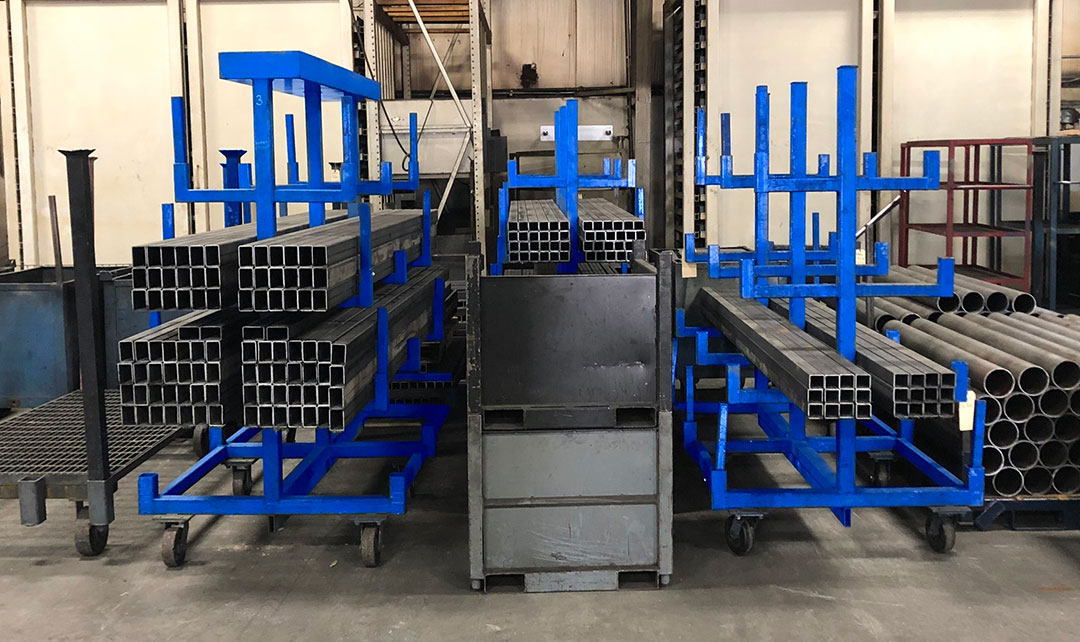Top 10 Benefits of WIP Carts in Your Manufacturing Facility
In today’s fast-paced manufacturing world, optimizing production flow and increasing efficiency are crucial for staying competitive. That’s where work-in-progress carts—also known as WIP carts—come in. These specially designed carts are more than just tools for transporting goods; they’re essential equipment that help streamline operations, enhance safety, and support lean manufacturing goals.
Whether you refer to them as work-in-process carts, custom carts, or simply carts, their benefits are undeniable. Let’s dive into the top 10 reasons why every manufacturing facility should consider integrating WIP carts or WIP racks into daily operations.
1. Enhanced Workflow Efficiency
Streamlining Production with WIP Carts
Efficiency is everything in manufacturing. With a well-designed work-in-progress cart, your production line becomes a smooth, flowing operation instead of a series of disconnected workstations. These carts are built to move materials, components, and assemblies seamlessly from one station to the next, reducing bottlenecks and delays.
A WIP cart can be tailored to fit your assembly line, ensuring that each part or product gets precisely where it needs to go—right when needed. The mobility and modularity of these carts allow for seamless integration into any manufacturing layout. That means fewer interruptions and a more synchronized process. Employees don’t have to waste time searching for materials or tools because everything they need is on the cart.
Minimizing Downtime with Optimized Transport
Every minute lost to moving materials inefficiently is a minute not spent building products. WIP carts and WIP racks reduce this downtime by offering a reliable, repeatable way to transport parts. With designated spots for each tool, part, or fixture, workers don’t need to leave their stations to retrieve components.
The result? More hands-on time, less foot traffic, and faster production cycles. Smart manufacturers know that downtime kills productivity and profits. By incorporating carts into their daily operations, companies can cut unnecessary delays and maximize throughput.
2. Improved Material Handling
Reducing Manual Labor with Ergonomic Designs
Material handling is one of the most labor-intensive aspects of manufacturing. But it doesn’t have to be. WIP carts and WIP racks are designed with ergonomics in mind, meaning less lifting, bending, and carrying for your team. With smooth-rolling wheels, adjustable shelves, and easy-to-grip handles, these carts minimize physical strain and reduce the risk of workplace injuries.
Over time, this adds up to significant savings—not just in terms of fewer injuries and less downtime, but also increased morale and worker satisfaction. Your employees aren’t just safer—they’re happier, which means they’re more productive.
Protecting Materials During Transit
Damaged materials are costly. But when you use a work-in-process cart designed specifically for your components, you dramatically reduce the risk of scratches, dents, or total loss. Foam inserts, dividers, and lock-in compartments can keep even the most delicate parts safe during transit.
These features make WIP carts especially valuable in industries that handle high-precision or high-value components, such as aerospace, electronics, or medical manufacturing. With better protection during movement, you minimize rework and waste, which eat into your margins.

3. Space Optimization on the Shop Floor
Vertical Stacking and Modular Designs
Floor space is precious in any manufacturing facility. That’s why WIP carts are often designed to be stackable or modular, allowing you to use vertical space instead of cluttering walkways or work zones. Taking advantage of height frees up square footage and keeps your facility tidy and organized.
Custom carts can be built to fit under workstations, roll into storage areas, or nest with other carts when not in use. It’s all about using your space smarter, not harder.
Reducing Clutter and Improving Accessibility
A clean, organized shop floor isn’t just nice to look at—it’s safer and more efficient. When carts are used to store parts, tools, and materials in an orderly fashion, everything becomes easier to find and reach. Workers spend less time digging through bins or walking across the shop to find what they need.
This level of organization enhances productivity and supports lean initiatives by reducing motion waste. Plus, when audits or inspections roll around, you’ll be glad everything is clearly labeled and neatly arranged.
4. Increased Productivity
Faster Material Delivery to Workstations
Imagine if every component your workers needed was always at their fingertips. That’s the reality WIP carts create. By preloading carts with the exact materials and tools required for each task, you cut down on employees’ time walking, waiting, or requesting supplies.
Whether it’s assembly, fabrication, or packaging, having a dedicated cart for each step in the process keeps operations flowing. And when carts are mobile, they can be moved wherever they’re needed—ensuring no downtime between jobs.
Decreasing Cycle Time and Idle Time
One of the main goals in any manufacturing setup is to reduce cycle time—the time it takes to produce one unit from start to finish. WIP carts help achieve that by keeping everything organized and mobile. They eliminate unnecessary stops, reduce walking distance, and allow operators to focus on value-added tasks.
The result? A leaner, faster, more efficient production line. When idle time drops, so does the cost per unit, boosting your bottom line.
5. Better Inventory Control
Visibility of Items in Progress
One overlooked benefit of using WIP carts is better visibility of what’s in the pipeline. When items are on carts, supervisors and managers can easily see what stage each unit is at. This visual control supports real-time decision-making and keeps everyone on the same page.
You’ll no longer have to rely on spreadsheets or guesswork to know where things stand. Glancing across the shop floor can tell you what’s in progress, what’s next, and what needs attention.
Tracking with Barcodes or RFID
Integrating technology like barcodes or RFID tags into your carts can take inventory control to the next level. Each cart can be tracked throughout the facility, providing real-time data on part location, status, and movement. This level of traceability not only improves efficiency but also supports compliance in regulated industries.
Plus, with automation-friendly carts, you can easily link your material handling system to your ERP or MES software, enabling more intelligent planning and forecasting.
Conclusion
Work-in-process carts, or WIP carts, are more than just tools for moving things around your manufacturing floor—they’re vital assets that enhance efficiency, boost productivity, and support a wide range of operational goals. From optimizing space to improving worker safety and facilitating lean manufacturing principles, these carts are indispensable in a competitive industrial environment.
When you choose the right WIP cart—or design a custom cart—you’re not just investing in better material handling. You’re investing in smoother workflows, lower costs, and a safer, more organized work environment. Whether your facility is small and agile or large and complex, carts are a simple, scalable solution to some of the biggest challenges in modern manufacturing.
The key is in the implementation. Identify your bottlenecks, understand your unique requirements, and choose carts that align with your strategic goals. And always remember—it’s not just about moving products; it’s about moving forward, faster and smarter.
So if you’re looking to cut waste, improve flow, and future-proof your operations, WIP carts might just be the upgrade your manufacturing facility needs.
FAQs
What is a work-in-progress cart?
A work-in-progress (WIP) cart is a mobile storage and transport solution used in manufacturing environments to move parts, assemblies, or tools between workstations during the production process. These carts are designed to support efficiency, organization, and safety.
How does a WIP cart improve manufacturing efficiency?
WIP carts streamline workflows by reducing the time spent transporting materials, minimizing errors, and organizing components for quick access. This results in faster production cycles, less downtime, and increased throughput on the factory floor.
Can I customize a WIP cart for my factory?
Absolutely! One of the most significant advantages of WIP carts is their customization ability. You can design a custom cart to match the size, shape, and type of materials you handle, and even integrate features like adjustable shelves, tool holders, or electronic tracking systems.
Are WIP carts suitable for all types of manufacturing?
Yes, WIP carts are incredibly versatile and can be used across various industries—from automotive and aerospace to electronics and medical device manufacturing. They can be tailored to meet the specific needs of any production process or facility layout.
How do I choose the right cart for my operations?
Start by analyzing your workflow and identifying inefficiencies. Consider factors like the size and weight of items, how far they need to travel, and how frequently they’re handled. From there, choose or design a cart that addresses those needs while enhancing safety and speed.




